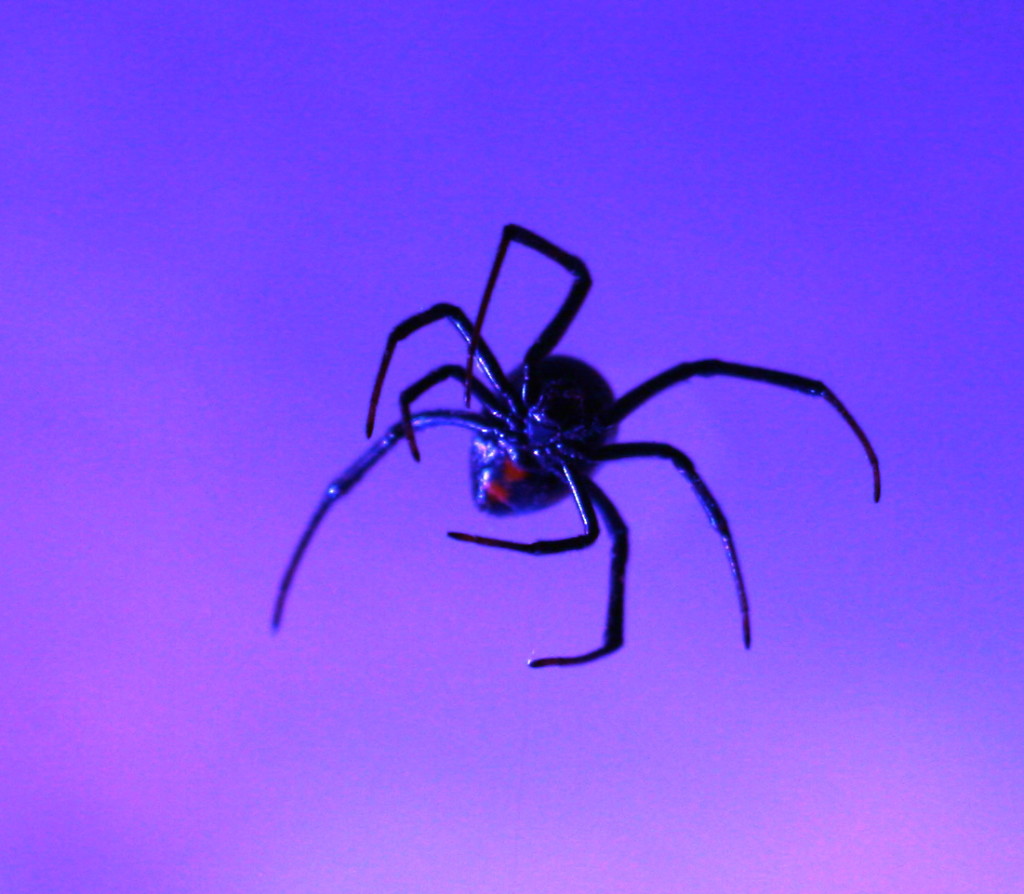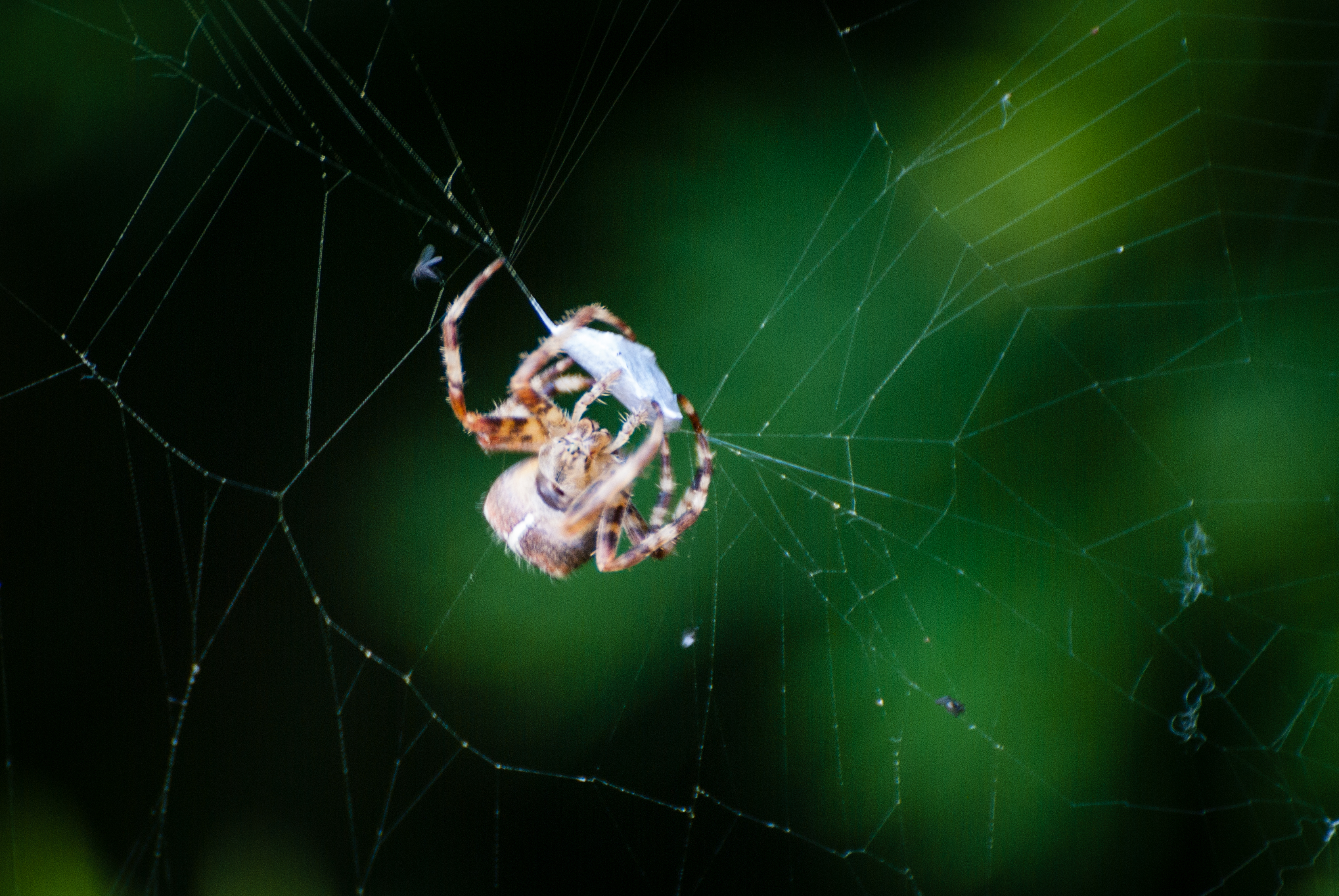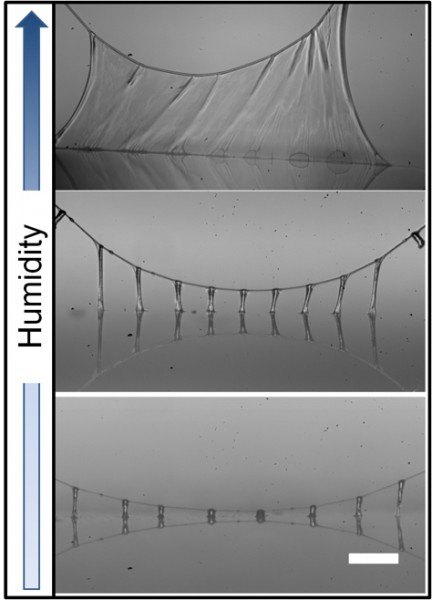
[Image above] One of the deadliest spiders in existence: the black widow. Credit: Justin Ennis; Flickr CC BY 2.0
I’ll say it: spiders creep me out.
Unwittingly stepping through a spider’s web out in the yard and getting tangled in its sticky hair-like fibers gives me the ultimate chills and makes me want to jump out of my own skin.
But you don’t have to love these eight-legged creatures to understand their brilliance. I’ll admit it… they are pretty cool. From a distance.
We’ve been paying attention to the latest materials science trends when it comes to spider silk. And the struggle is real for scientists on a mission to bring the numerous benefits of spider silk to the masses. Turns out that it’s tough to spin this strong fiber synthetically in the lab and mimic the impressive strength and durability of the real thing.
Last month, we reported on scientists at Bolt Threads in Emeryville, Calif., who have been working to develop a scalable way to create synthetic spider silk-like fibers using genetic engineering. And they’ve made considerable progress thanks to $40 million in investments and government grants secured for the research.
It’s clear that advancing the development of synthetic spider silk for scale-up potential is a priority for many industries.
The latest spider silk-specific materials science breakthrough comes from researchers at the University of Akron (Akron, Ohio) and Virginia Polytechnic Institute (Blacksburg, Va.).
The team is “exploring the properties underlying spider glue’s humidity-responsive adhesion, which might lead to much-sought-after ‘smart adhesives’ that have the ability to function even in high-humidity conditions,” according to a recent American Institute of Physics news release.
The research focuses specifically on the “capture silk,” which “consists of an axial fiber coated with ‘glue droplets’ at regular intervals,” the release explains.

A spider uses capture silk to secure its next meal. Credit: Clemens v. Vogelsang; Flickr CC BY 2.0
What makes this “spider glue” so unique is that “its adhesion increases in response to humidity, and for some species, the adhesion continues to increase up to 100% relative humidity,” according to the research. Synthetic adhesives—like the kind you find on Band-Aids—can’t stand the heat and peel right off under warm, humid conditions.
The team began their research by examining five diverse species of spiders and measuring the adhesion of the capture silk from each.
“The habitats of these species ranged from dry to wet and humid, so we measured the adhesion as a function of humidity and used high-speed imaging to quantify the spreading rate of the spiders’ glue droplets,” Gaurav Amarpuri from the University of Akron explains in the news release.
“The viscosity of glue at humidity of maximum adhesion was very similar, even though that humidity varied from 30 percent to 90 percent among the five species studied,” Amarpuri says. “This shows the unique ability of spiders to change or ‘tune’ their glue viscosity to maximize adhesion and prey capture.”

Capture threads peeled from a glass substrate under low, medium, and high humidity conditions. Note the increase in glue extensibility with humidity. (scale = 100µm) Credit: Yizhou Chen; University of Akron
The team says studying the way these spiders change glue thickness in the capture silk in response to humidity levels of their environment could be key to developing smarter adhesives.
“Our study highlights viscosity modulation as a potent tool that various organisms use to derive different functionalities,” Amarpuri notes. “Further work to quantify bulk rheological changes within biological materials may result in a new class of smart materials.”
The team presented their research on Oct. 14 at the 87th Annual Meeting of The Society of Rheology in Baltimore, Md.
